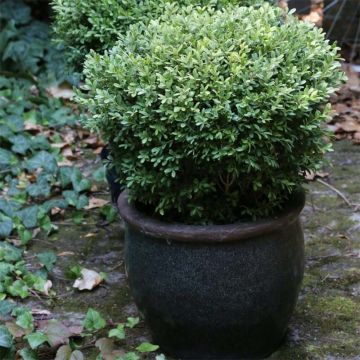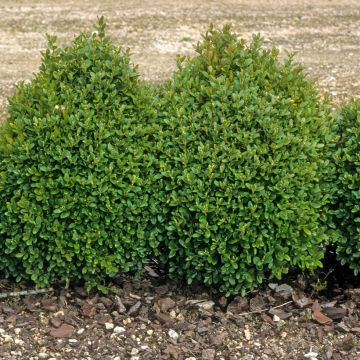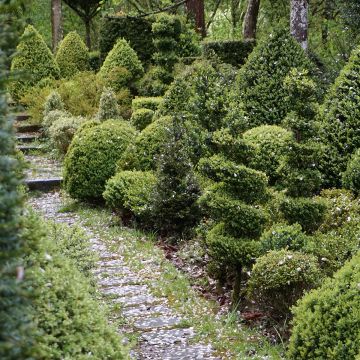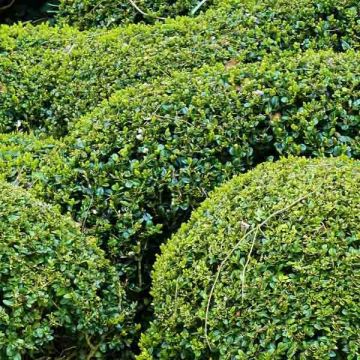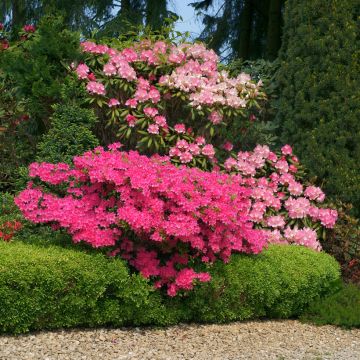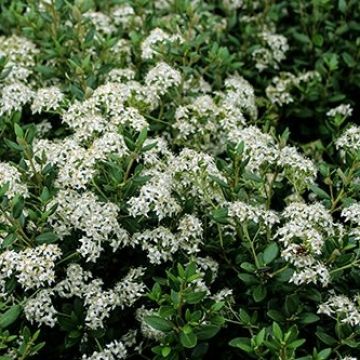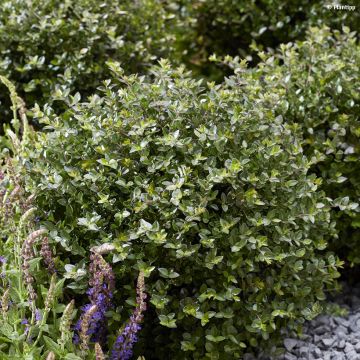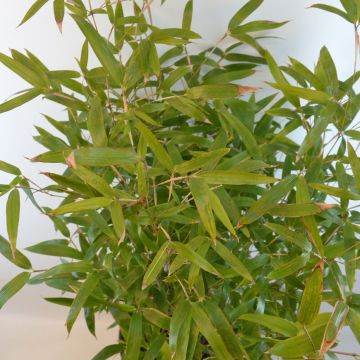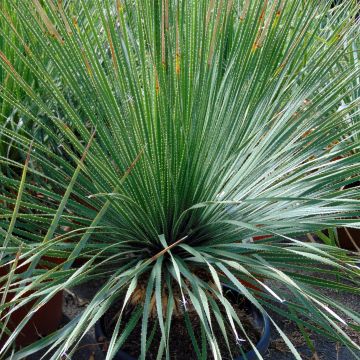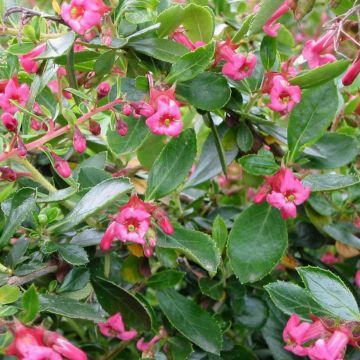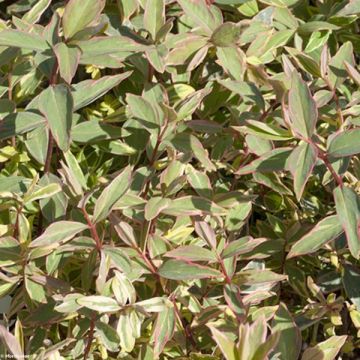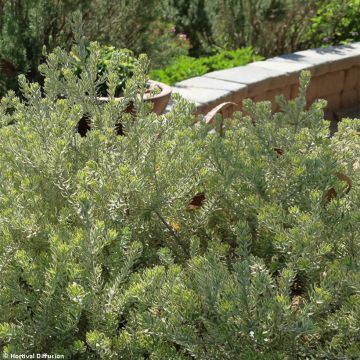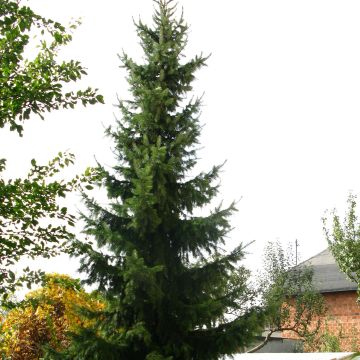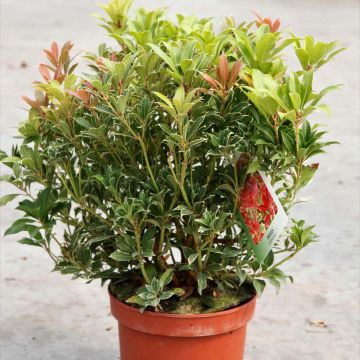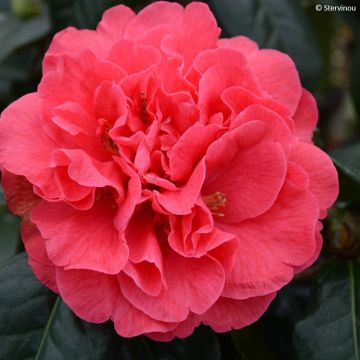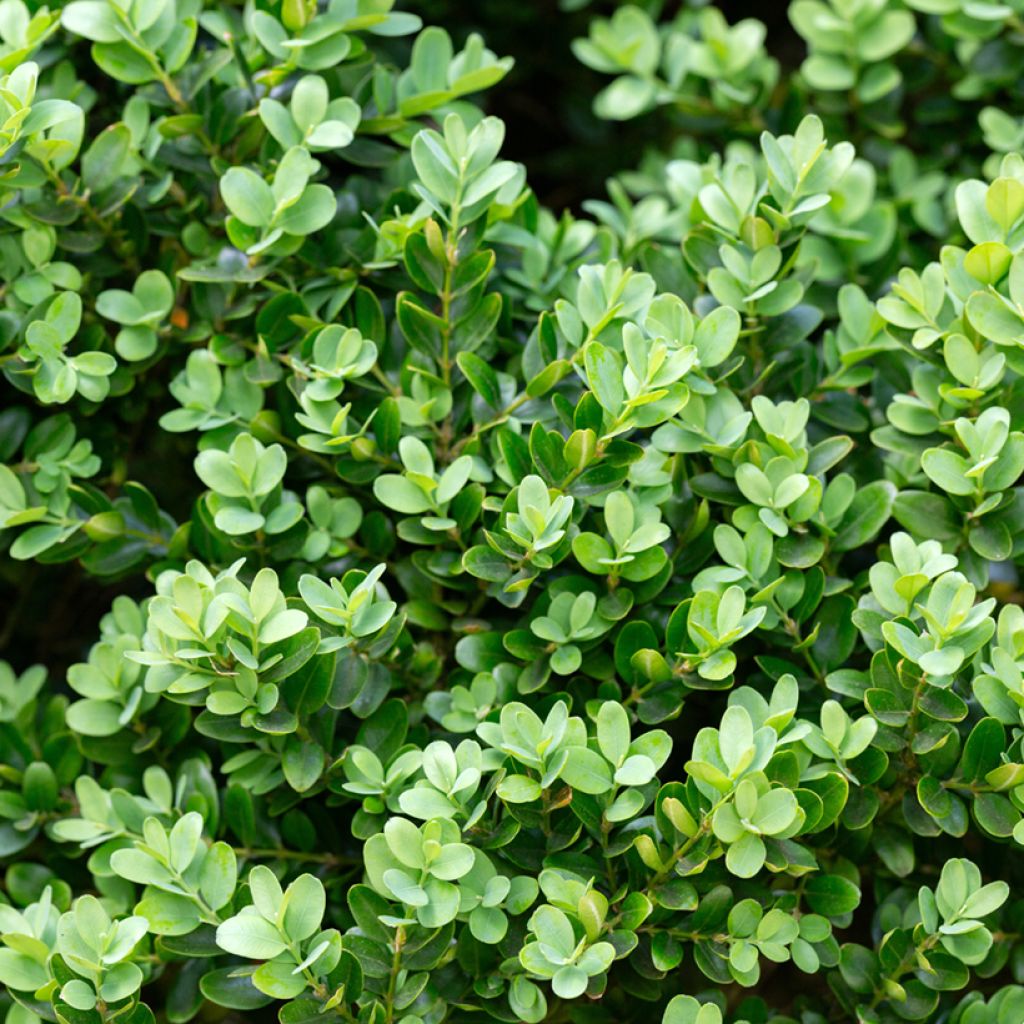

Buxus microphylla Faulkner - Boxwood
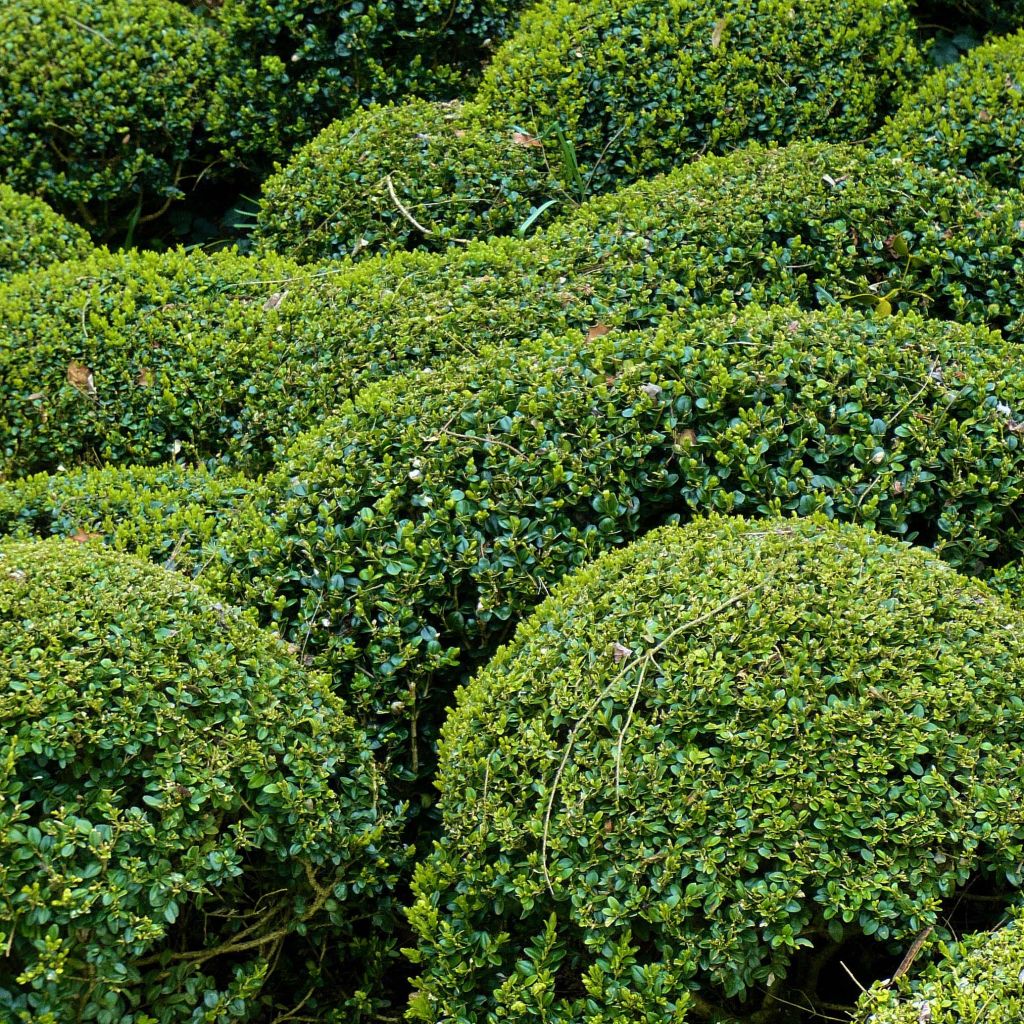

Buxus microphylla Faulkner - Boxwood
Buxus microphylla Faulkner - Boxwood
Buxus microphylla Faulkner
Japanese Box, Small leaf Box, Boxwood
Boxwood arrived in very good shape, very healthy and green, with a good root system. The three ordered young plants already have a good pruning, relative to the price that can be found in garden centers. The water plants were delivered quickly and with great care.
Cédric, 22/03/2023
This item cannot be shipped to the selected country
Delivery charge from €5.90
Delivery charge from €5.90
More information
Schedule delivery date,
and select date in basket
This plant carries a 24 months recovery warranty
More information
We guarantee the quality of our plants for a full growing cycle, and will replace at our expense any plant that fails to recover under normal climatic and planting conditions.
From €5.90 for pickup delivery and €6.90 for home delivery
Express home delivery from €8.90.
From €5.90 for pickup delivery and €6.90 for home delivery
Express home delivery from €8.90.

Does this plant fit my garden?
Set up your Plantfit profile →
Description
Buxus microphylla 'Faulkner' is a variety of Japanese boxwood with small evergreen leaves of a dark and glossy green colour. It stands out for its naturally dense, compact and upright habit, making it particularly suitable for creating topiaries or small trimmed hedges. This decorative shrub, a symbol of French gardens and well-maintained mazes, is a timeless classic. Hardy and easy to grow in moderately dry soil, it grows at a slow pace without requiring much maintenance. Whether used in mixed or trimmed hedges, as a free-standing shrub, as a topiary or as a bonsai, it lends itself to every desire!
Buxus microphylla is native to Japan and was introduced to Europe around 1860. Like our common boxwood (Buxus sempervirens), it belongs to the family Buxaceae. The 'Faulkner' variety has replaced Buxus rotondifolia in many public spaces and private gardens due to its increased resistance to certain fungal diseases. While it prefers partial shade and relatively cool environments, it can tolerate dry and chalky soils and is perfectly suited for repeated pruning. This shrub has an extremely dense bushy habit and grows very slowly, reaching approximately 1.20m (3ft 11in) in height and 1m (3ft 4in) in width at maturity. Its evergreen foliage, shinier than that of common boxwood, consists of small elliptical leaves with a dark green colour. During winter frosts, this boxwood may sometimes turn pale brown-yellow. The discreet, nectar-rich and fragrant flowering occurs in clusters of small greenish petals and yellow stamens, usually in April-May. Each cluster consists of a terminal female flower and several pendant male flowers. This flowering is followed by the formation of small tough grey-brown capsules containing numerous ripe seeds in late summer. Their scent attracts ants, which help spread the plant. It is not uncommon to find boxwoods that are 50 years old in family gardens, and in very old gardens, individuals over 500 years old can be encountered.
The 'Faulkner' boxwood is perfect for creating a small evergreen hedge or an original plant sculpture, if one has patience. It enhances every structure of the garden as well as neighboring plants. Annual pruning in June allows for a pleasant and abundant spring flowering. Boxwood is often used on terraces, in beautiful ceramic or stone pots, and in small gardens due to its high decorative value throughout the year while occupying little space. In kitchen gardens, it can be used to delimit areas for aromatic plants, different sections of a vegetable garden, or the area reserved for cut flowers. In a slightly wild area of the garden, under large trees for example, it will form beautiful bright bushes throughout the year, emerging from a carpet of Algerian Bellecour ivy for instance.
A legendary tree: boxwood has lemon yellow wood with a very fine grain and is remarkably hard. It is the hardest wood found in the northern hemisphere, second only to ebony from various species native to tropical regions of the old world. Symbolizing immortality, it has been used since ancient times for the quality of its wood: the Greeks and Romans used it to make wax-covered tablets for writing. Highly sought after by turners, engravers, and sculptors, it was also used to make various musical instruments, tool handles, and the mallet of masonic lodges, where it symbolized firmness and perseverance.
Report an error about the product description
Buxus microphylla Faulkner - Boxwood in pictures
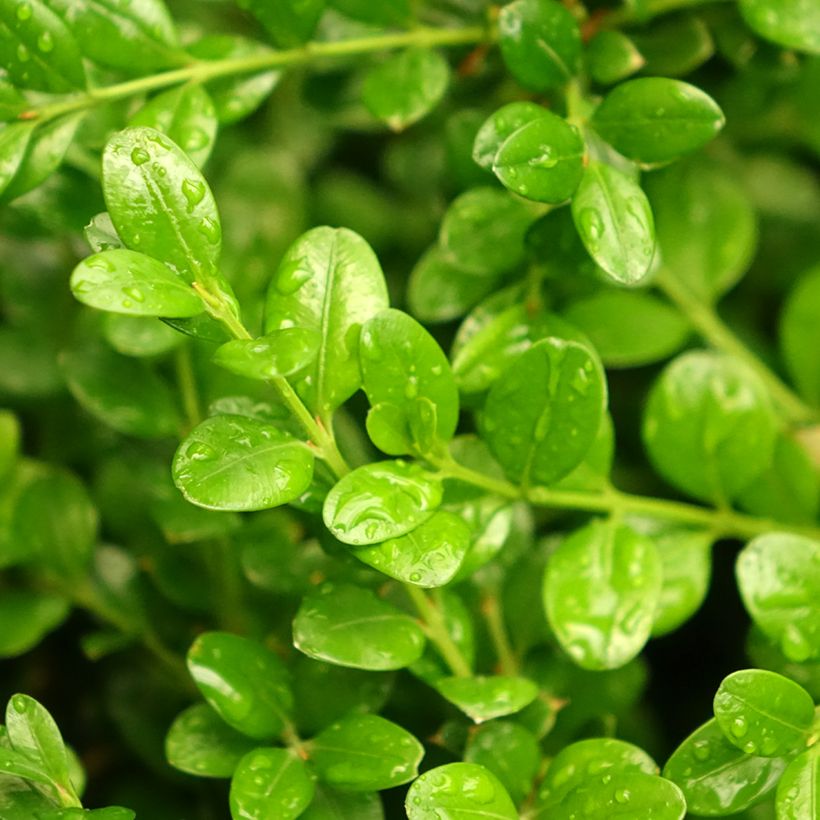

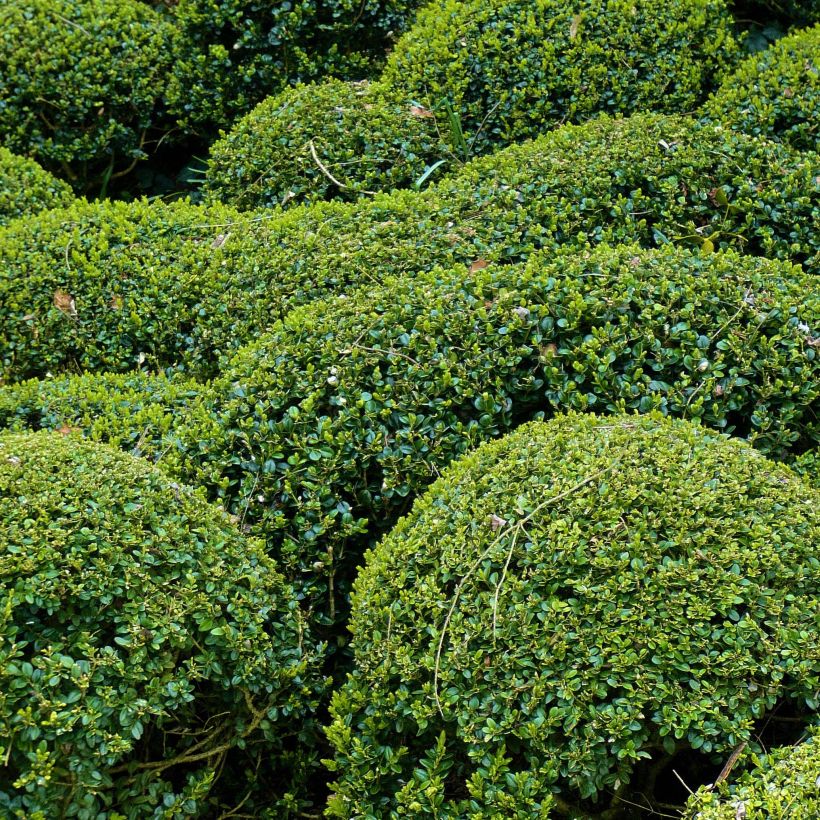

Plant habit
Flowering
Foliage
Botanical data
Buxus
microphylla
Faulkner
Buxaceae
Japanese Box, Small leaf Box, Boxwood
Central Europe
Other Buxus - Boxwood
Planting and care
The 'Faulkner' boxwood, which is really easy to grow, prefers a neutral or slightly alkaline soil that is not too dry, but it shows great adaptability as evidenced by the diversity of environments it can thrive in. It will grow in any well-prepared and well-loosened soil, and in all exposures. For container cultivation, apply rose fertilizer once or twice a year, and protect it from prolonged and severe freezing temperatures that can superficially damage the foliage.
Planting period
Intended location
Care
-
, onOrder confirmed
Reply from on Promesse de fleurs
Evergreen shrubs
Haven't found what you were looking for?
Hardiness is the lowest winter temperature a plant can endure without suffering serious damage or even dying. However, hardiness is affected by location (a sheltered area, such as a patio), protection (winter cover) and soil type (hardiness is improved by well-drained soil).

Photo Sharing Terms & Conditions
In order to encourage gardeners to interact and share their experiences, Promesse de fleurs offers various media enabling content to be uploaded onto its Site - in particular via the ‘Photo sharing’ module.
The User agrees to refrain from:
- Posting any content that is illegal, prejudicial, insulting, racist, inciteful to hatred, revisionist, contrary to public decency, that infringes on privacy or on the privacy rights of third parties, in particular the publicity rights of persons and goods, intellectual property rights, or the right to privacy.
- Submitting content on behalf of a third party;
- Impersonate the identity of a third party and/or publish any personal information about a third party;
In general, the User undertakes to refrain from any unethical behaviour.
All Content (in particular text, comments, files, images, photos, videos, creative works, etc.), which may be subject to property or intellectual property rights, image or other private rights, shall remain the property of the User, subject to the limited rights granted by the terms of the licence granted by Promesse de fleurs as stated below. Users are at liberty to publish or not to publish such Content on the Site, notably via the ‘Photo Sharing’ facility, and accept that this Content shall be made public and freely accessible, notably on the Internet.
Users further acknowledge, undertake to have ,and guarantee that they hold all necessary rights and permissions to publish such material on the Site, in particular with regard to the legislation in force pertaining to any privacy, property, intellectual property, image, or contractual rights, or rights of any other nature. By publishing such Content on the Site, Users acknowledge accepting full liability as publishers of the Content within the meaning of the law, and grant Promesse de fleurs, free of charge, an inclusive, worldwide licence for the said Content for the entire duration of its publication, including all reproduction, representation, up/downloading, displaying, performing, transmission, and storage rights.
Users also grant permission for their name to be linked to the Content and accept that this link may not always be made available.
By engaging in posting material, Users consent to their Content becoming automatically accessible on the Internet, in particular on other sites and/or blogs and/or web pages of the Promesse de fleurs site, including in particular social pages and the Promesse de fleurs catalogue.
Users may secure the removal of entrusted content free of charge by issuing a simple request via our contact form.
The flowering period indicated on our website applies to countries and regions located in USDA zone 8 (France, the United Kingdom, Ireland, the Netherlands, etc.)
It will vary according to where you live:
- In zones 9 to 10 (Italy, Spain, Greece, etc.), flowering will occur about 2 to 4 weeks earlier.
- In zones 6 to 7 (Germany, Poland, Slovenia, and lower mountainous regions), flowering will be delayed by 2 to 3 weeks.
- In zone 5 (Central Europe, Scandinavia), blooming will be delayed by 3 to 5 weeks.
In temperate climates, pruning of spring-flowering shrubs (forsythia, spireas, etc.) should be done just after flowering.
Pruning of summer-flowering shrubs (Indian Lilac, Perovskia, etc.) can be done in winter or spring.
In cold regions as well as with frost-sensitive plants, avoid pruning too early when severe frosts may still occur.
The planting period indicated on our website applies to countries and regions located in USDA zone 8 (France, United Kingdom, Ireland, Netherlands).
It will vary according to where you live:
- In Mediterranean zones (Marseille, Madrid, Milan, etc.), autumn and winter are the best planting periods.
- In continental zones (Strasbourg, Munich, Vienna, etc.), delay planting by 2 to 3 weeks in spring and bring it forward by 2 to 4 weeks in autumn.
- In mountainous regions (the Alps, Pyrenees, Carpathians, etc.), it is best to plant in late spring (May-June) or late summer (August-September).
The harvesting period indicated on our website applies to countries and regions in USDA zone 8 (France, England, Ireland, the Netherlands).
In colder areas (Scandinavia, Poland, Austria...) fruit and vegetable harvests are likely to be delayed by 3-4 weeks.
In warmer areas (Italy, Spain, Greece, etc.), harvesting will probably take place earlier, depending on weather conditions.
The sowing periods indicated on our website apply to countries and regions within USDA Zone 8 (France, UK, Ireland, Netherlands).
In colder areas (Scandinavia, Poland, Austria...), delay any outdoor sowing by 3-4 weeks, or sow under glass.
In warmer climes (Italy, Spain, Greece, etc.), bring outdoor sowing forward by a few weeks.

































